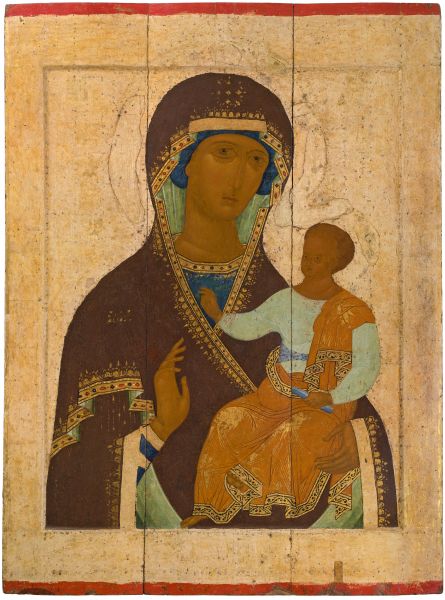|
|
The Mother of God Hodigitria. Circa 1502–03

Dionysius and Workshop,
Tempera on wood
141,2 x 105,7 x 3
Пост. в 1962 из Кирилло-Белозерского музея-заповедника Происходит из местного ряда иконостаса Рождественского собора Ферапонтова монастыря
Annotation
This work depicts the Hodigitria (Greek: “she who points the way”) type of Mother of God, named after the famous Byzantine icon from the Hodegon Monastery in Constantinople. The Hodegon icon depicted the Virgin en face, turned to the worshippers and holding the Child, who raises His hand in blessing. Mary points to Christ as the path to salvation. Many different versions of the Mother of God Hodigitria have been painted over the centuries. In Russia, for example, there was the Mother of God Hodigitria of Smolensk, Tikhvin, Jerusalem and Georgia. While differing in the details, all versions retain their common elements of austerity and majesty. This particular variant of the Mother of God Hodigitria has no direct analogies prior to the seventeenth century, when works with a similar iconography known as the Mother of God Hodigitria of the Seven Lakes were popular in Russian art.
Author's Biography
Dionysius
Dionysius
Circa 1440 - Before 1508
Old Russian painter of icons and frescoes. Headed a team of artists including two of his sons — Vladimir and Theodosius. Painted the frescoes and iconostasis of the Cathedral of the Dormition in the Moscow Kremlin (1481) and the Cathedral of the Nativity of the Blessed Virgin in the St Ferapont Monastery (1502-03). Created one of the recognised masterpieces of Old Russian icon-painting - The Crucifixion (1500).

